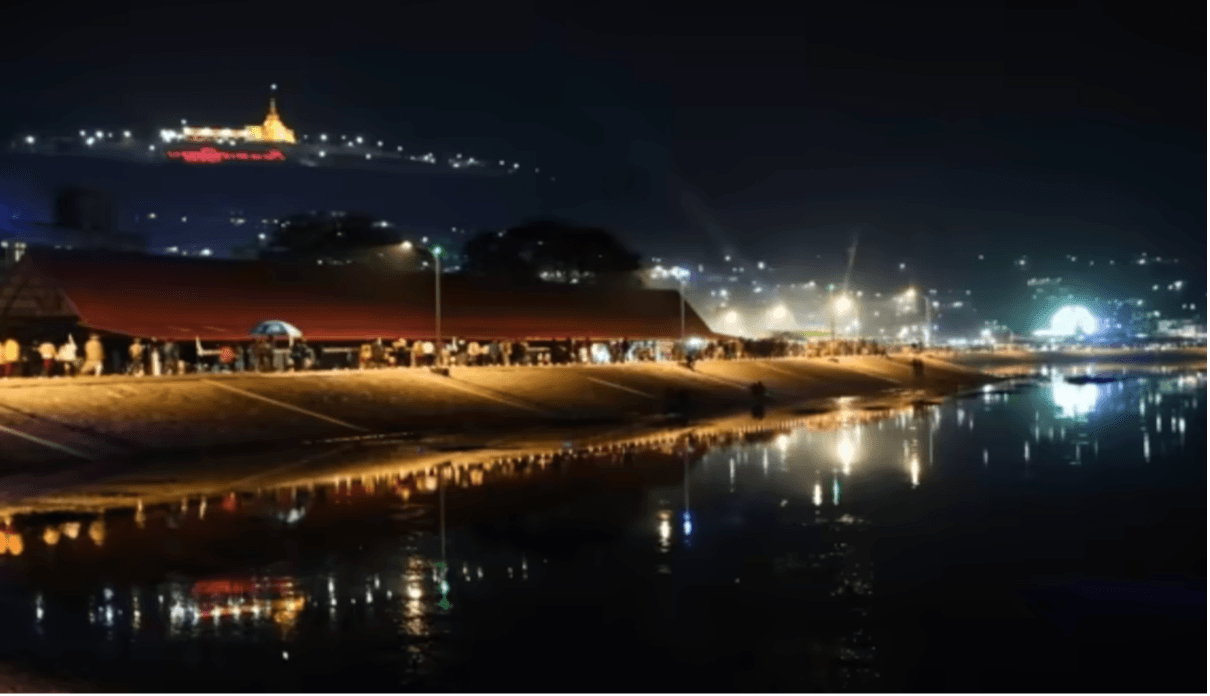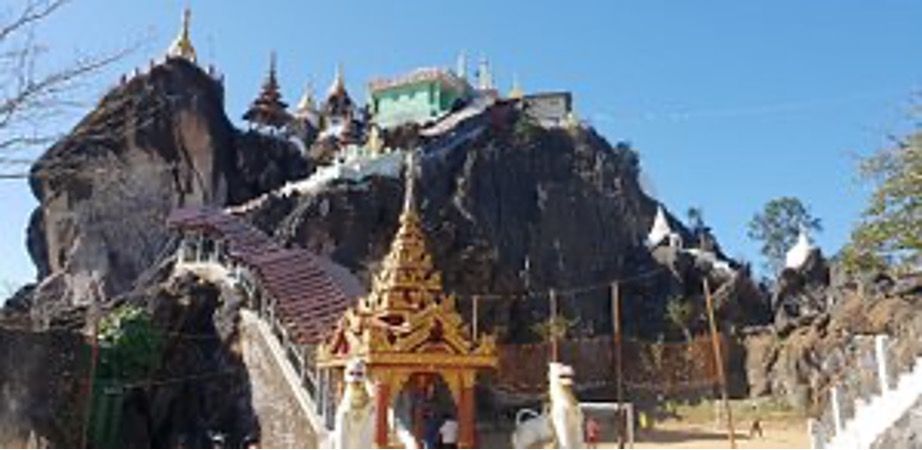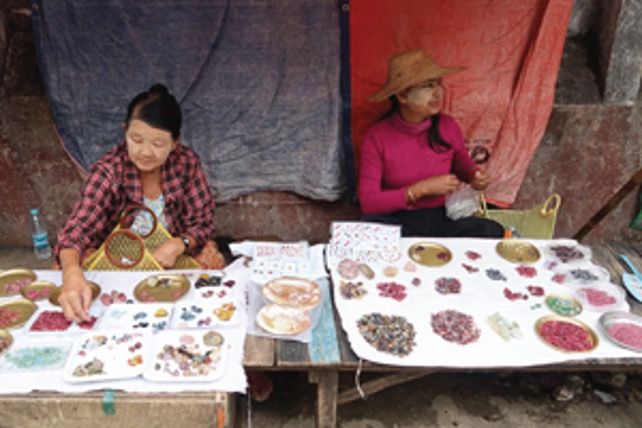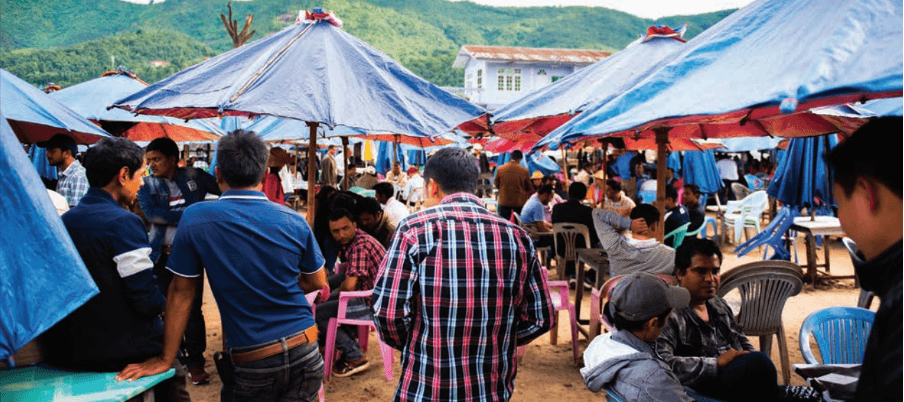Magical Mogok - An Unforgettable Experience

Parvis Brown
A stunning, unforgettable city surrounded by a multitude of pagoda-covered mountains, Mogok is arguably the oldest, and most famous, gem tract in the world. It is certainly the most alluring, and the most romantic.
Situated in a verdant valley, the area enjoys a relatively temperate climate for most of the year. Although summers are hot, they are short. And winters, while chilly, are again brief. The rest of the year is dry and mostly warm, conducive to the back-breaking work carried out by the majority of the town’s inhabitants. The monsoon season lasts for almost half the year, however, with June to October registering the highest levels of precipitation. If you have not yet experienced a Myanmar monsoon, you are in for a shock!
The artificial lake in the centre of town is arguably its dominant feature. Locals gather around the lake on cool evenings, reviewing the business of the day and trading anecdotes about, increasingly, the volatile political situation in the country.

Architecturally a mix of unprepossessing modern shophouses, low-rise apartment blocks and rather nondescript office buildings interspaced with areas of wooden dwellings and the occasional neo-classical mansions, the town would seem to be at first glance indistinguishable from its countless cousins throughout the country. But stroll around the pleasant, tree-lined and shady streets for more than a minute, and you will see that the economy of Mogok is based on one product, and one product alone: gems.
Gemstones permeate every single facet of virtually everyone’s lives in this town. The livelihood of every single person in Mogok is directly linked to the trading of gems. Even religion in the town is inextricably intertwined with the gem trade – several pagodas are encrusted with not only the traditional gold, but thousands of tiny gemstones as well. Gems, particularly rubies, gold and silver are routinely used as offerings, and the Chantargyi Pagoda even contains its own mini gemstone museum.

Captivating though these pagodas can be, and I would absolutely recommend a visit to as many of them as time allows, it is ultimately the gem markets of Mogok which will undoubtedly be of most interest to you, dear readers. These can be broadly categorized as follows:
Morning Markets
Historically, virtually everyone could set themselves up by the side of the road with a rickety table and then proceed to try and sell their gems. With the influence of the military, permits are increasingly required, however. Nevertheless, a casual and first-time visitor to the city will be amazed at the sheer amount of people sat by the roadside, either by a table or sitting on the ground, openly selling their wares. Other options for the buyer do however exist.
First, there is a new morning market for rough stones, which I understand is gaining quickly in trade and popularity.

The quality of stones sold on the roadside is inevitably rather low. Ruby, spinel, peridot and semi-precious gems such as topaz, moonstone and citrine can be seen in huge numbers, but the stones, whilst sometimes almost unbelievably cheap, will either be opaque, tiny, or heavily included. Both rough and cut stones are available, as are some specimens such as spinel in matrix. All dealing at this level is done in the local currency, the Kyat.
One of the main morning markets is Yoke Shin Yone, sometimes known as the Cinema market. Under an array of tarpaulins to shield both buyers and sellers from the almost blinding sun, the quality here is definitely better, but visitors will be amazed at the sheer difference in quality between some of the offerings. Persistence as always is the key, as is the ability to earn the respect of the seller by showing knowledge and professionalism. Prices are often inflated, however, and sometimes to barely credible levels.
Afternoon Markets
Possibly the most atmospheric of all the markets, the afternoon Panchan Market is little more than a wide empty plot of land interspersed with blue umbrellas, under which dealers gather round, sitting on colourful plastic chairs of all hues, to inspect, buy and sell their gemstones. Visitors to Chantaburi will recognize the style of business here: prospective buyers sit at the tables under the umbrellas, while sellers form an orderly, or sometimes not-so-orderly, queue to offer their wares.
We have found that the overall quality of gems at this market is generally superior to all other markets, and it tends to attract a slightly more upscale level of local dealer. The whole range of Mogok stones, both in rough and faceted form, can be found here, with a preponderance of ruby and spinel. Once again, a first-time visitor, especially one unaccompanied by a knowledgeable local, may very well be shocked by some of the prices quoted. Indeed, countless visitors have correctly commented that the prices here seem significantly higher than the plusher gem and jewellery emporiums in Yangon, and even the highest end of the plethora of shopping malls in Bangkok.

Caveat Emptor!
In Mogok, as in any unfamiliar trading market thousands of miles from home, the buyer must be extremely cautious. Although outright fakes (synthetics and simulated gems) are relatively rare, they do exist, and it is an unfortunate reality that often these are likely to appear for sale when a new, foreign, buyer appears on the scene. There is also a plethora of (mostly obvious to spot) ‘gem certificates’ which have clearly been printed up, rather amateurishly, at someone’s home. Fortunately, however, there now are two or three reputable gemmologists in town who, for a most reasonable fee, can check the authenticity of any gem. These will, in most cases, be synthetic rubies of varying sizes.
And what about the serious, professional buyer with possibly thousands or even tens of thousands of dollars to spend during his or her trip to Mogok? What are their options both in sourcing high quality stones and ensuring they are authentic? The answer is both simple and complicated. Mogok, like many other mining or trading centres, is ultimately dominated by a handful of five or six major dealers. In most cases, these companies have government connections and even shareholders, and at least one is directly controlled by the military. This cabal will almost always get hold of the best quality stones and control their price and sales. The contrast between this handful of dealers, who are millionaires countless times over, and the poverty of the miners, is stark and unnerving. Access to these dealers, however, can only be arranged by someone with the very best of local connections.
I hope that this brief blog entry has given you a taste of this most captivating of gem towns. As I type, a combination of Covid-19 and political restrictions mean that permissions to visit are not being given. We can only hope that this ban will soon be lifted to the benefit of both locals and visitors alike.
Keen-eyed readers might notice a glaring omission from this blog – the mines of Mogok. But please be assured, dear readers, that this is entirely deliberate, as our next blog will focus on precisely this topic. Happy Reading!